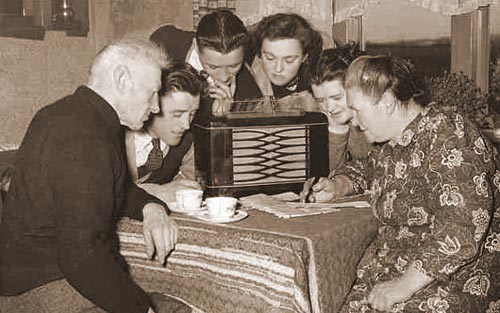LETTER FROM SENATOR JON ERPENBACH TO THE PUBLIC SERVICE COMMISSION
REGARDING WIND SITING RULES
SOURCE: PSC DOCKET # 1-AC-231
November 30, 2010
Public Service Commission
Eric Callisto , Chairperson
Mark Meyer, Commissioner
Lauren Azar, Commissioner
PO Box 7854
Madison WI 53707-7854
Dear Commissioners Callisto, Meyer and Azar:
I am writing to today regarding Clearinghouse Rule # 10-057 – PSC Wind Siting Rules proposed Chapter 128. Having voted for the rule’s return to the PSC with the majority of the Senate Committee on Commerce, Utilities, Energy and Rail, I wanted to share some perspective as to why.
In the committee hearing that was held on October 13, 2010, we received a number of suggestions regarding the rules that resonated with committee members. I am including copies of that testimony for your consideration and will summarily list them in outline fashion for your use.
- Wisconsin Towns Association Memo
- Setback of large wind turbines from nonparticipating residences – at a minimum having the setback from the property line of a nonparticipating property, not the residence.
- Decrease the maximum noise limits from 50 dBA during daytime and 45 dBA during nighttime hours.
- Eliminate the authority of PSC to approve lesser standards than the minimum standards to protect the public under PSC 128.02 (4) Individual Consideration
- Increase the 25% limit that a local government is allowed to require a large wind turbine owner to compensate the owner of a nonparticipating residence. PSC 128.33 (3) Monetary Compensation.
- Require the owner of the wind turbine to reimburse the emergency personnel who train them in safety and emergency procedures. PSC 128.14 (4) (e) under Emergency Procedures
- Change of ownership should not be valid until the new owner has shown proof of compliance with all specific requirements of the original owner.
- Wisconsin Realtor Association
- Setback
- Attorney review of contracts
- Informational brochure for property owners
- Clarification that lease negotiators must have a WI Real Estate License
- Additional health impact research
- Time period for addressing complaints
- Define the term “affected” in “affected nonparticipating residence”
- DATCP
Incorporate the use of DATCP guidelines that intend to maintain the productivity of the farmland associated with wind energy projects.
- Midwest Food Processors Association, Inc. & WI Potato & Vegetable Growers Assoc. Inc.
Address the concerns regarding aerial application of farmland and compensation for conflict that arises.
- The concerns raised by countless individuals that the health concerns or wind turbines are not being addressed adequately, that the setbacks need revision, that the “takings” issue needs to be addressed, that dBA levels need to be reduced both day and night, that shadow flicker must be addressed in the rule, that the health aspects of Wind Turbines have to be studied and taken into consideration. I have not included the reams of paper that was shared with the committee by all of these individuals – I know much of it has already been shared with the PSC.
In closing, I think the above outline gives the Commission a number of particular issues to re-examine within the rule.
I would be happy to discuss further the return of the rule by the Senate Committee with the Commission.
Sincerely,
JON ERPENBACH
State Senator
27th District
JE.tk
REPLY FROM ERIC CALLISTO, CHAIRMAN OF THE PUBLIC SERVICE COMMISSION
December 3, 2010
Dear Senator Erpenbach,
Thank you for sharing your concerns and comments regarding the wind siting rules. We appreciate the summary you provided us and will take all comments into consideration when deciding upon modifications that the Commission plans to take up at an open commission meeting soon.
Eric Callisto
Chairperson
 NOTE FROM THE BPWI RESEARCH NERD:
NOTE FROM THE BPWI RESEARCH NERD:
Why won't Public Service Commission Chairman Eric Callisto tell Senator Erpenbach exactly when the open meeting regarding the wind siting rules will take place?
Certainly Chairman Callisto knows exactly when this meeting will happen. Why give such a vague reply to a state senator?
For those of us watching this issue, it's important to note that Better Plan has been told that the calendar of events on the PSC website is not an official posting place for such meetings so the PSC website calendar is exempt from the 24 hour notice prior to a public meeting that is required by law.
Better Plan has been unable to find the official posting place for the meetings apart from the entry way of the PSC building in Madison.
For many of us, a daily drive to Madison to check the posting at the PSC isn't possible.
Better Plan is concerned that the PSC is purposefully being vague about the date and time of this meeting and urges you to call the PSC daily to find out when this meeting will take place and ask for an agenda.
| Public Service Commission of Wisconsin |
| 610 North Whitney Way. P.O. Box 7854 |
| Madison, Wisconsin 53707-7854 |
| Phone:(608)266-5481 |
| General Toll Free:(888)816-3831 |
| TTY:(608)267-1479 |
| Fax:(608)266-3957 |
| URL:http://psc.wi.gov/ |
SECOND FEATURE:
AN 82-YEAR-OLD GOT TIRED OF SPITTING INTO THE WIND, WENT OUT ON A LIMB
SOURCE: The Portland Press Herald, www.pressherald.com
December 6 2010
Donald Smith,
My name is Donald Smith. I am 82 years old and a native Mainer. I am a veteran and a grandfather. I was arrested and charged with criminal trespass at the Rollins Mountain wind project site in Lincoln on Nov. 8. Five of us formed a human barricade to the site.
Dozens of others braved the cold rainy November day to protest First Wind’s project.
Many people have asked me why I did this. Good question. I hope I give good answers.
The first reason is that nobody seems to be paying attention to the negative aspects of wind power — least of all the complacent and complicit media in Maine.
If we had just stood out there with signs, even the local reporter would likely have overlooked the event. putting myself on the line to dramatize why this project is so wrong, it caught the attention of media far and wide.
It seems that most people understand utility scale (or industrial) wind power superficially, accepting wind power as “green” and “clean” and the panacea for solving energy and climate challenges. It is the result of years of masterful propaganda by the wind industry.
ALL ABOUT SUBSIDIES
Some of us have actually done a lot of research into industrial wind and have found huge negatives. dramatically raising the visibility of the issue with the arrests, we are getting people to discover these negatives as the follow-up dialogue occurs.
I have gained insights from my research into industrial wind. The wind industry would not exist without massive government subsidies. For example, the US Energy Information Administration reports that in 2007, wind received $23.37 per megawatt hour in subsidies; the next highest subsidy was $1.59 for nuclear. Those are our tax dollars going into something that doesn’t work.
We are putting up wind turbines in places where there isn’t enough wind to generate electricity. Look at the NREL map of wind potential in Maine. The area around Lincoln Lakes is all white. Look at the color code and white means “poor.”
My guess is wind turbines are not about generating electricity, but about selling a carbon tax in the form of renewable energy certificates, raking in production tax credits, and having the taxpayers pay the cost of construction.
Another reason I got arrested is to protest the proliferation of these industrial wind projects. I retired to live a quiet life on Caribou Pond, with a view of Rollins Mountain. That ridge will have 15 turbines, each 389 feet high. The total number of turbines will be 40 on Rollins Mountain and the ridges of Rocky Dundee.
TOO DESTRUCTIVE TO BE GREEN
An acoustics expert stated that the noise from these turbines will negatively impact hundreds of people on the lakes and nearby country roads, the same well-documented noise problems that have been experienced at Mars Hill, Freedom and Vinalhaven.
I am not a NIMBY. I don’t believe these industrial machines belong anywhere in the rural landscape. Not in anyone’s yard — back, front or side.
The noise issue is just one of many. If you could see the destruction of Rollins Mountain taking place right now, you would never consider this a “green” project. The DEP would fine me if I moved a rock at my home, yet they approved ridges being blasted away and scalped. They will never be the same.
The Rollins project will blast away more than seven miles of ridges and clear-cut more than one thousand acres and install 20 miles of powerlines to tie into the grid.
That is for just one project. Without thinking through the ramifications, the Legislature in 2008 passed LD 2283, a horrible law to give favoritism to wind power. They chose an arbitrary figure of 2,700 megawatts of installed capacity by 2020, which at a generous actual output of 25 percent, ends up being just 675 megawatts of intermittent, unpredictable, unreliable power.
If Rollins is 60 megawatts, then it will mean 45 more projects like this to achieve the goal.
THE PRICE IS WAY TOO STEEP
Do the math. Based on the impact of Rollins, that means at least 315 miles of Maine ridges and mountains blasted away to install 1,800 turbines; 45,000 acres or more of carbon sequestrating forest permanently clear-cut; and 1,000 miles or more of new powerlines.
The price? Rollins’ price tag of $130 million times 45 is a staggering $5.85 billion.
Why did I get arrested? To help bring forth what a folly this is and how damaging it is to Maine’s environment. Wind power is bad economics and bad public policy. It is far from “green.” The negative impacts of these projects on the environment and our quality of place far outweigh the pittance of good they might do for the planet.
THIRD FEATURE
STATE OF NEW JERSEY, SENATE, No. 2374, 214th LEGISLATURE
INTRODUCED NOVEMBER 8, 2010
Sponsored by:
Senator SEAN T. KEAN
District 11 (Monmouth)
Senator ANDREW R. CIESLA
District 10 (Monmouth and Ocean)
Co-Sponsored by:
Senator Gill
SYNOPSIS
Prohibits siting of industrial wind turbines within 2,000 feet of any residence or residentially zoned property.
AN ACT concerning wind energy and supplementing Titles 13 and 40 of the Revised Statutes.
BE IT ENACTED by the Senate and General Assembly of the State of New Jersey:
1. a. The Legislature finds and declares that industrial-strength wind turbines can be over 400 feet tall and have blades that sweep up to 1.5 acres in area;
that, as a result of their size, these machines have the potential to obstruct scenic vistas, create large community eyesores, and reduce property values for nearby residents unless they are sited at appropriate distances from residential areas;
that recent developments in the area of wind power production have further indicated that the noise and vibration stemming from the operation of large-scale industrial wind turbines may cause nearby residents to suffer from a health condition known as “wind turbine syndrome,” which may result in sleep disturbance, headaches, ringing of the ears, ear pressure, dizziness, vertigo, nausea, visual blurring, racing heartbeat, irritability, problems with memory and concentration, and panic episodes accompanied by internal pulsation or quivering sensations; that people have moved away from their homes to avoid the ill effects associated with “wind turbine syndrome”;
and that medical, noise, and acoustics experts, as well as wind energy organizations, have indicated that incidents of “wind turbine syndrome” can be avoided if industrial-strength wind turbines are sited a considerable distance away from residential property.
b. The Legislature therefore finds that, in order to protect the public health and welfare, and in order to preserve the scenic vistas enjoyed by State residents and protect residents from unnecessary reductions in property value, it is both reasonable and necessary to prohibit the siting of industrial-strength wind turbines in or near residential areas.
2. a. No wind energy structure may be erected or installed in the State at a site that is closer than 2,000 feet from any residence or residentially zoned property.
b. No State entity may approve any plan, proposal, or permit application for a wind energy structure if that wind energy structure will be erected or installed at a site that is closer than 2,000 feet from any residence or residentially zoned property.
c. The provisions of this section shall apply only to wind energy structures erected or installed in the State subsequent to the effective date of this act.
d. As used in this section, “wind energy structure” means any on- or off-shore turbine, facility, farm, or other structure that is designed for the purpose of supplying electrical energy produced from wind technology, but shall not include a “small wind energy system,” as defined by section 1 of P.L.2009, c.244 (C.40:55D-66.12).
3. a. No municipal agency may approve any plan, proposal, or permit application for a wind energy structure if that wind energy structure will be erected or installed at a site that is closer than 2,000 feet from any residence or residentially zoned property.
b. The provisions of this section shall apply only to wind energy structures erected or installed in the State subsequent to the effective date of this act.
c. As used in this section, “wind energy structure” means any on- or off-shore turbine, facility, farm, or other structure that is designed for the purpose of supplying electrical energy produced from wind technology, but shall not include a “small wind energy system,” as defined by section 1 of P.L.2009, c.244 (C.40:55D-66.12).
4. This act shall take effect immediately.
STATEMENT
This bill would prohibit the siting of any industrial-strength wind energy production system within 2,000 feet of any residence or residentially zoned property. It would further prohibit any State entity or local government unit from approving a plan, proposal, or permit application for any industrial wind energy system that will be so sited.
The bill’s prohibitions are necessary in order to ensure that the increased use of wind energy in the State will not cause a significant obstruction of scenic views or reduction in home values for New Jersey residents, and, more importantly, will not cause New Jersey residents to suffer from the ill health effects associated with “wind turbine syndrome” – a condition that has been connected with the close placement of industrial-scale wind turbines to residential areas. Symptoms of “wind turbine syndrome” include sleep disturbance, headaches, ringing of the ears, ear pressure, dizziness, vertigo, nausea, visual blurring, racing heartbeat, irritability, problems with memory and concentration, and panic episodes accompanied by internal pulsation or quivering.
These symptoms, which are continuing in nature, often force people to move away from their homes. Experts on “wind turbine syndrome,” experts in noise and acoustics, and wind energy associations, however, have all indicated that instances of “wind turbine syndrome” can be avoided if industrial wind energy systems are sited a considerable distance away from residential housing.
Such distant siting would also alleviate potential problems associated with vista obstruction, and would ease the impact of industrial wind energy facilities on property values.
Consequently, in order to protect the public health and welfare, and preserve the State’s scenic vistas and residential property values, it is both reasonable and necessary to prohibit the erection of industrial wind energy facilities within 2,000 feet of any residential property.
It is important to note, however, that this bill would not apply to the siting of small wind energy systems that are used primarily for on-site consumption purposes. “Wind turbine syndrome” has been associated only with the residential placement of large-scale, industrial-strength wind turbines. Moreover, small, personal-use wind energy systems are not likely to cause significant vista obstruction or the reduction of surrounding property values, as is true of their larger, industrial counterparts.
Click here to download entire text of bill








